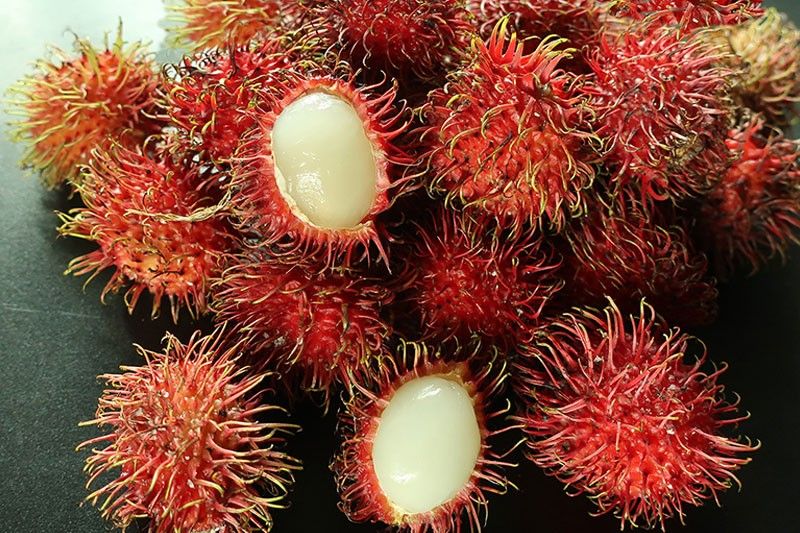Rambutan: Trivia about Southeast Asia's exotic fruit

MANILA, Philippines — After flowering from late March to early May, the rambutan is a favorite summer fruit in season, fruiting abundantly and producing the exotic fruit of Southeast Asia.
The fruiting season begins in August and is expected to last until October. It is closely related to lychees, with which it shares several similarities. First, their skins are both red, although the rambutan’s is very spiny. Their fruits are round to oval in shape and have a single seed covered with sweet, delicious translucent to whitish pulp. The problem with rambutan is that the pulp does not easily separate from the seed the way lychees do. There is now a variety commonly called "tuklapin" that has the fruit easily separating from the seed.
Now, this is a fruit that has a clear history of where it came from. It was introduced to the Philippines by Indonesia in 1912. Native to Southeast Asia, it was introduced by Indonesia again in 1920 and by Malaysia in 1930. The fruit got its name from the Malay word "rambut," which means hair, referring to the spiny outer covering of the fruit.
Best enjoyed when eaten raw, the rambutan flesh can also be used in making desserts, such as sorbets or ice cream, as well as puddings. If the flesh comes off easily from the seed, it can even be sliced and added to fresh fruit salads for a unique flavor twist or used as topping for cakes in a topical fruit medley. Like other fresh fruits, it can be made into a good jam or jelly. It can also be used in savory dishes, particularly curries.
The seed of the rambutan is high in oleic acid and arachidic acid and is valuable to industry because it can be used in manufacturing soap. Its leaves, bark and roots are used in traditional medicine and can be used in the production of dye.



















